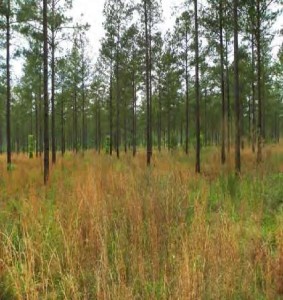Why do we need to do prescribed fires in our woods? It’s a question that both foresters and wildlife biologists get, especially this time of the year, when there is smoke from prescribed fires wafting through the air.
Fire has been an important part of the landscape throughout time. Over the eons entire, wildlife-rich, fire-dependent

ecosystems developed in fire-prone settings. Fire was (and is) as natural and needed as the rain. Native Americans, early settlers and landowners into the 21st century saw positive results — on wildlife and vegetation — of natural fire and disruptions that thinned the forest. They replicated it successfully to improve both. In more recent times, burning on the landscape was abandoned in favor of total fire suppression. Combined with a cultural reluctance to purposefully manage forests, bobwhites and other species have been pushed out of much of the forested landscape.
But that is changing. More public land managers in states in the bobwhite’s core range have adopted an ecosystem management approach and private landowners have those models – and results — to see.
Prescribed fire can be defined as “a safe way to apply a natural process, ensure ecosystem health and reduce wildfire risk.” Prescribed fire is applied on the landscape by trained professionals using a written plan that guides them on how to safely burn to accomplish their goals. Landowners and natural resource managers conduct prescribed fires for many reasons. They include improving wildlife habitat, reducing hazardous fuels, managing competing vegetation, perpetuating fire-dependent species, controlling insects and diseases, and more.
Not all prescribed fires are the same though. If you are a landowner wanting to create better habitat for wildlife on your property, especially bobwhites, prescribed fires need to be more frequent and in more open savanna-like forests or grassy woodlands.
Now, I bet you are asking why these fires need to be in open forests. To maximize quail habitat, there has to be both sunlight on the ground and fire. You must ensure that these two ingredients reach the ground in the right mix to maximize the potential for that habitat. And this approach will work on pine and mixed pine and hardwood stands.
Today, most forest stands have a closed canopy with little or no sunlight reaching the forest floor. Quail and many other species require a vigorous and diverse herbaceous ground cover which includes a mix of native warm season grasses for nesting, forbs for seed and insect production, and scattered clumps of woody shrubs for protection from weather and predators. Without abundant sunlight reaching the ground none of these habitat components will develop.
One rule of thumb is that when you walk through your woods, you should have sunlight on your head-and your boots- half the time. To get these open stands of forest and to allow sunlight to reach the ground, commercial timber harvest and thinnings have to occur. These timber harvests can provide income for other land management expenses prior to final harvest. But to achieve enough sunlight on the forest floor for these purposes, thinning needs to be heavier than your typical forest management thinning … but that allows the remaining trees to grow faster and straighter, creating a more valuable timber product in the end if that’s what the landowner desires.
In southern yellow pine forests most commercial thinnings are done down to a basal area of 75 – 80 square feet. To improve and maintain habitat for bobwhites, pine stands should be thinned and maintained at a basal area at 50 square feet or less. Hardwood stands would need to be thinned and maintained at 30-40 square feet of basal area.
Basal area is a common term used to describe the average amount of an area (usually an acre) occupied by the tree stems. It is defined as the total cross-sectional area of all the stems in a stand measured at breast height, expressed as square feet per acre. So that all measurements are standardized tree diameter is typically measured at 4.5 from the ground or approximately breast height. This is referred to as diameter at breast height (DBH).
Subsequent and frequent applications of prescribed fire – generally every 2-4 years, depending on the situation – are necessary to clear the duff on the forest floor, bare some of the soil, increase soil surface temperature, release nutrients and allow the native grasses and forbs already in the seed bank to germinate. In areas where prescribed burning may not an option, some of its benefits can be achieved with mechanical and herbicide treatments.
Best results will require repeated applications of fire at regular intervals. Quail habitat will not be maintained with only a couple fires, or fires at infrequent intervals. In addition, neither thinning alone nor fire alone will provide the desired understory development, composition and structure, especially for bobwhites.
Finally, if you want to investigate this opportunity further, please contact a local wildlife biologist or a professional forester with experience in both wildlife habitat management and timber production.


